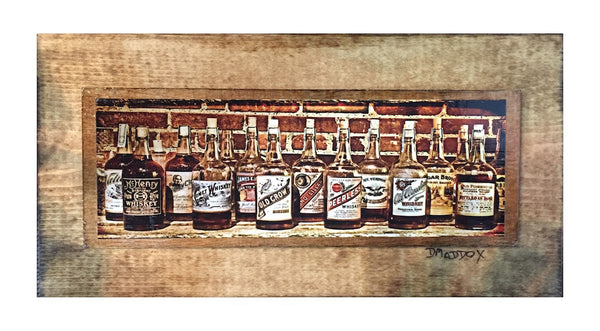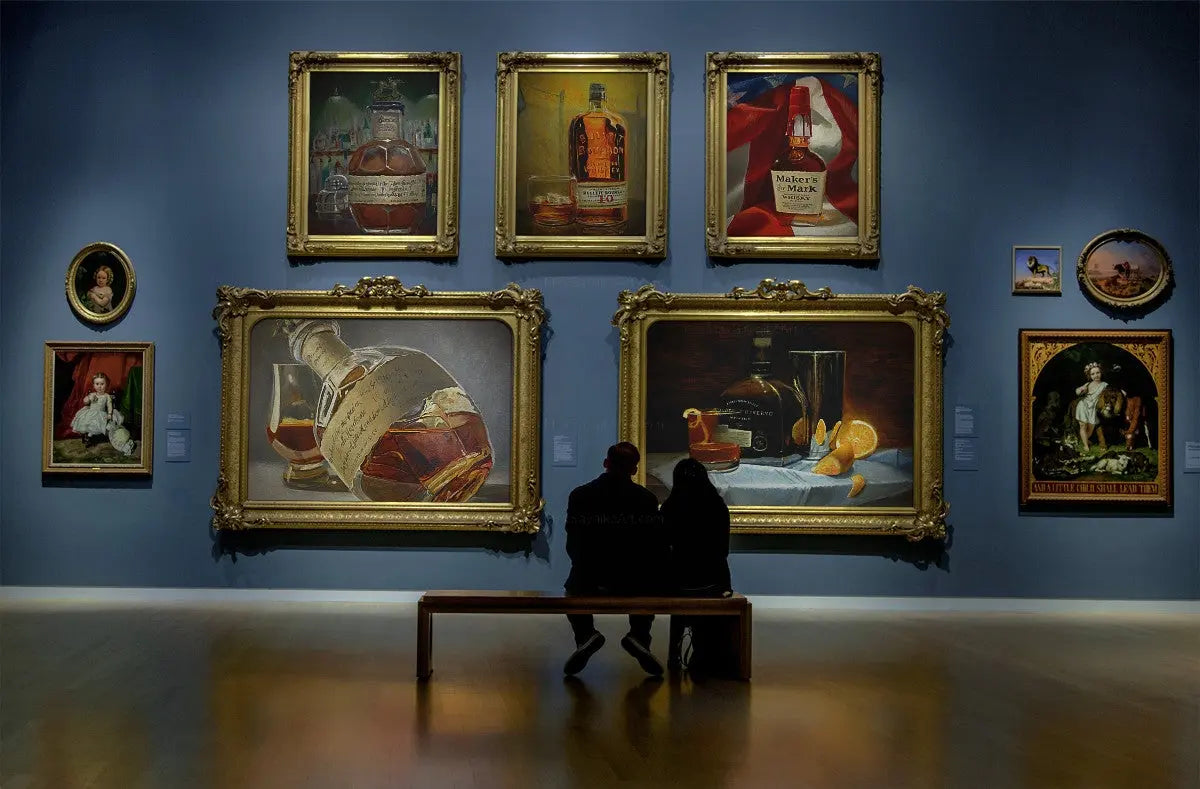Whiskey Art as a Declaration: Just How It Improves Home Decoration
Whiskey Art as a Declaration: Just How It Improves Home Decoration
Blog Article
The Importance of Whiskey Art in Celebrating Heritage and Craftsmanship in the Beverage Sector
The intricate partnership between whiskey art and the party of heritage and craftsmanship within the drink market can not be overemphasized. With attentively created labels and containers, whiskey brand names encapsulate their historic roots and the artisanal abilities that define their manufacturing methods.
The Historic Roots of Whiskey
At the heart of whiskey's appeal exists a rich tapestry of historic roots that map back to old worlds. The beginnings of whiskey can be connected to the purification methods of the Sumerians and Babylonians around 2000 BCE, where very early forms of fermented grain drinks started to emerge. Nevertheless, it remained in the Middle Ages that the art of purification evolved substantially, specifically in Ireland and Scotland, resulting in the production of whiskey as we understand it today.
The term "whiskey" itself obtains from the Gaelic word "uisce beatha," suggesting "water of life." This phrase underscores the cultural relevance of bourbon in Celtic societies, where it was typically connected with routines, parties, and communal bonding. By the 15th century, purification ended up being an identified craft within monastic neighborhoods, leading the way for the establishment of lawful distilleries.
As trade paths increased, scotch's popularity grew, transcending local borders and recording the interest of connoisseurs worldwide. Whiskey Art. This historical journey shows not only the craftsmanship behind scotch production however likewise its important function in social and social contexts, noting it as a considerable drink throughout history
Artistic Expression in Branding
Scotch branding stands as a compelling intersection of artistry and commerce, where aesthetic identification plays an essential role fit customer assumption. The visual appeals of whiskey tags, product packaging, and advertising and marketing products show not only the brand name's tale however likewise its core values and heritage. Through imaginative expression, distilleries share a narrative that reverberates with consumers, evoking feelings and stimulating connections.
Making use of color, typography, and images in branding serves to differentiate items in a saturated market. As an example, typical themes may stimulate a sense of credibility and craftsmanship, while modern-day designs can indicate advancement and forward-thinking. This calculated artistic direction boosts brand acknowledgment and loyalty, enabling customers to forge an individual relationship with the scotch they pick.
Furthermore, imaginative expression in branding frequently acts as a celebration of regional heritage. Distilleries regularly incorporate regional icons or historical recommendations right into their layouts, creating a local color that invites consumers to take part in a more comprehensive cultural experience. Eventually, the virtuosity behind whiskey branding not only improves aesthetic allure but also enhances the total story of the brand name, fostering a deeper recognition for the workmanship and heritage ingrained in each container.
Craftsmanship in Bottle Design
The creativity obvious in bourbon branding expands beyond visual identity to encompass the craftsmanship associated with bottle style. Each container works as a vessel not simply for the spirit within, yet additionally for the tale it informs concerning its high quality, beginning, and custom. The design process requires meticulous attention to detail, as components such as form, product, and closure add dramatically to the total assumption of the scotch.
Craftsmanship in bottle layout entails choosing top notch glass that can improve the scotch's color and quality, while likewise offering a tactile experience for the customer. The shape of the bottle must be both aesthetically enticing and practical, typically reflecting the heritage of the brand name. Lots of distilleries go with unique forms or embossed logo designs that stimulate a sense of credibility and history.
Moreover, the tag design and typography play a crucial duty in communicating the brand name's narrative. Bourbon Art. A well-crafted container not only astounds the consumer's eye yet also enhances the brand's dedication to high quality and practice. By doing this, the workmanship of bottle layout ends up being an essential element of the bourbon experience, merging virtuosity with a profound regard for heritage
Cultural Relevance of Bourbon Art
Commemorating practice and craftsmanship, the social importance of bourbon art transcends simple visual appeals, linking with the social and historical stories of the regions from which it stems. Each container serves as a canvas, illustrating the unique stories, mythology, and traditions that have formed neighborhood whiskey-making techniques. The elaborate layouts frequently show the heritage of the distillers, including symbols and themes that reverberate with the society and worths of their communities.

Additionally, whiskey art plays a crucial role in common gatherings and events, acting as a concrete web link between people and their shared experiences. By valuing the artistry in scotch packaging, consumers grow a much visit this page deeper understanding and respect for the craft, ultimately enriching their satisfaction of the drink itself.
Modern Trends in Whiskey Presentation
In recent times, the presentation of scotch has actually evolved to show modern tastes and trends while still recognizing typical craftsmanship - Limited Edition. Distilleries are significantly focusing on aesthetic aspects that boost the overall drinking experience, connecting the void in between heritage and modernity
Innovative bottle styles have actually arised, often incorporating sustainable products and imaginative tags that inform engaging stories. Many brands now work together with regional musicians, instilling their items with one-of-a-kind visual expressions that resonate with consumers. Additionally, limited-edition releases are frequently packaged in collectible containers, adding value and charm for lovers.

Final Thought
In verdict, bourbon art works as a crucial avenue for expressing the heritage and craftsmanship intrinsic in the drink sector. Through elaborate branding, ingenious container layouts, and culturally significant artistic components, scotch brand names properly recognize their traditions and get in touch with consumers. This creative narrative not only raises the recognition of bourbon yet additionally reinforces community identity and pride among producers. Ultimately, whiskey art plays an important role in preserving and celebrating Recommended Reading the rich cultural tapestry of whiskey-making.


Workmanship in check these guys out container style involves selecting high-quality glass that can boost the bourbon's color and clarity, while additionally giving a tactile experience for the consumer. In this means, the workmanship of bottle layout ends up being an important facet of the bourbon experience, merging artistry with an extensive respect for heritage.
In conclusion, bourbon art serves as an essential conduit for expressing the heritage and workmanship fundamental in the beverage market.
Report this page